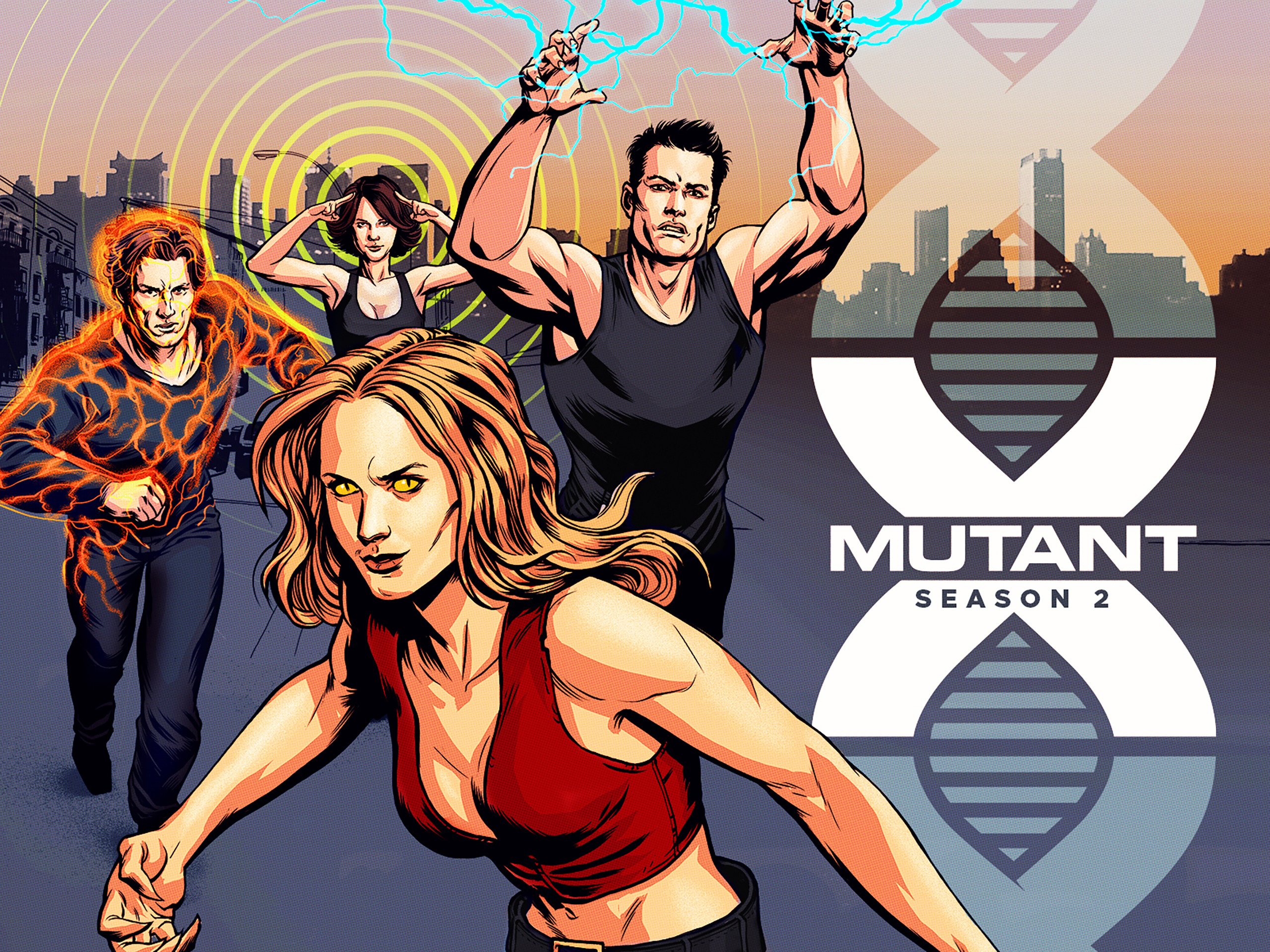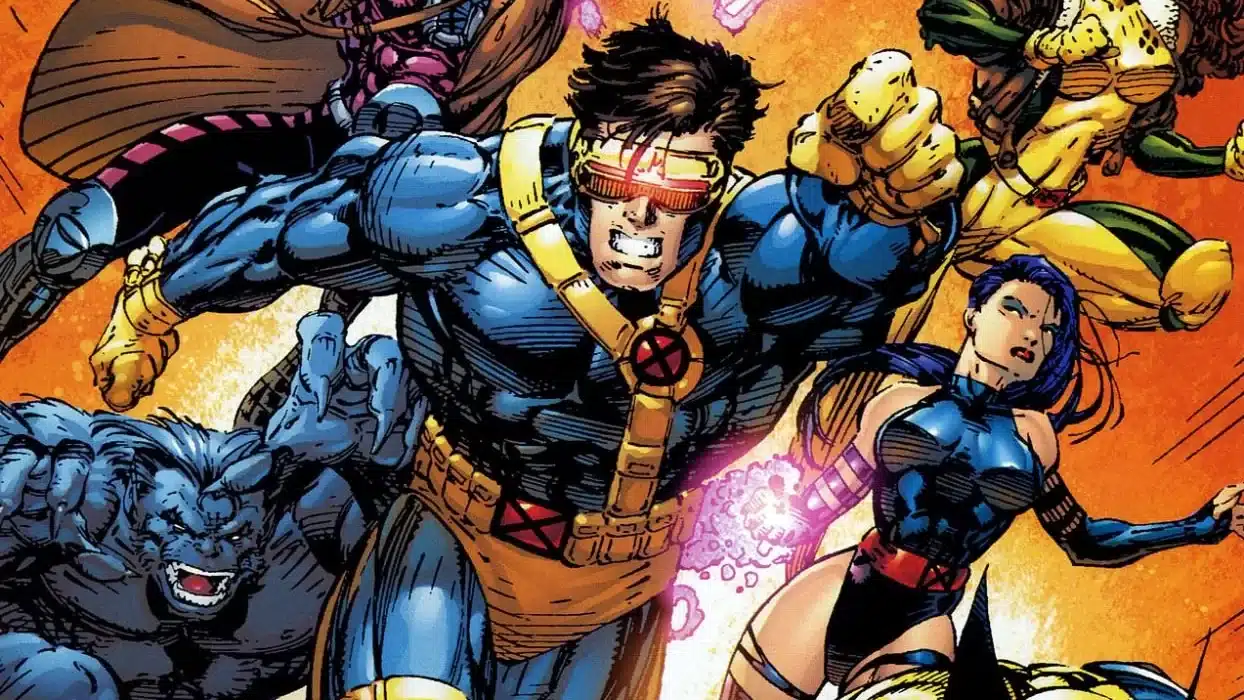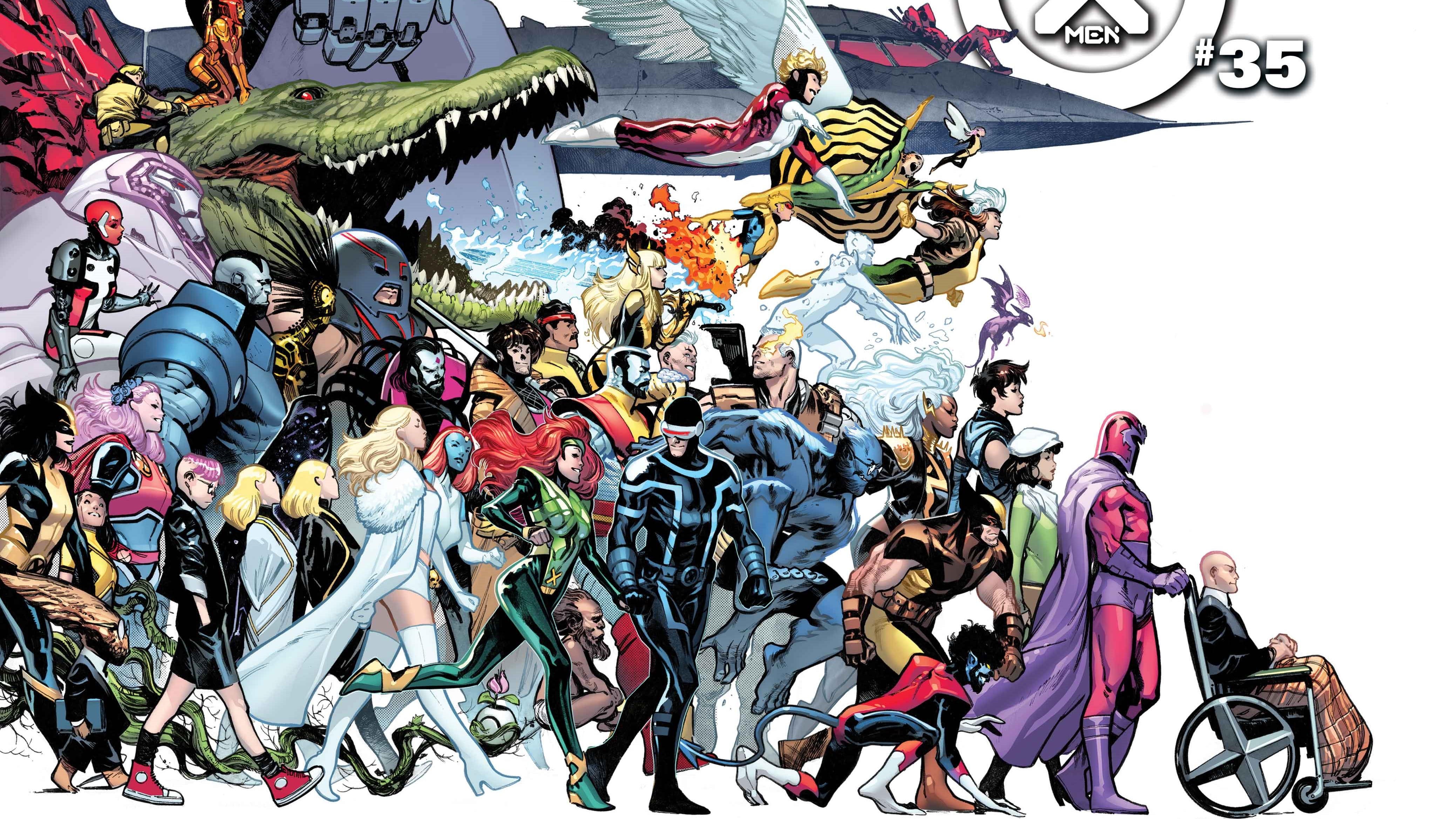Written by Trent Seely
A father-figure and rich benefactor brings together a team of mutants with extraordinary abilities to track down new mutants and save them from persecution or perhaps stop them from harming others. They study and hone their powers in an hidden location and use a stealth jet in order to operate under the radar of the public, government, and the shadowy corporations which would use mutants as tools. If that sounds like X-Men, it should. It’s also Mutant X.
Mutant X was a Canadian syndicated Science Fiction action-drama, similar to other mid-budget television shows like Andromeda or Farscape. I remember watching the show on Space (a Canadian television channel) in the early aughts as a teenager and not thinking very highly of it. Mutant X’s most defining characteristics were an albino Andy Warhol villain and black-leathery aesthetics clearly influenced by The Matrix films. At a passing glance you may not even suspect it was related to the X-Men, but it was. Until it wasn’t.

Originally, Mutant X was to be a live-action X-Men show. It was produced by Marvel and was the brainchild of famed Marvel Executive Producer Avi Arad. According to Tribune Entertainment, one of the show’s two primary production companies, connecting Mutant X to the X-Men was encouraged by Marvel. Given the unexpected success of the theatrical X-Men this seemed like a no-brainer, but therein lies the issue — intellectual property. Immediately after the television series was announced 20th Century Fox filed suit for breach of licensing rights and the show was estranged from its X-Men origins. Or was it?
Having recently watched the entire series from beginning to end I don’t think Marvel did a good job complying to court order. Every episode provides a bombardment of themes, imagery, or plot lifted squarely from the children of the atom. We’re talking mutant cures, mutant-specific viruses, social prejudice, alternate realities, astral plane shenanigans, and time travel. It’s all here.
So given that Mutant X was born of X-Men and has a lot of X-Men stuff, you could get away with calling it a stealth X-Men show. Maybe even a peer to Legion and The Gifted (which is not good for the latter).
I may have thus far described Mutant X as a schlocky sci-fi drama but in all honesty it’s a pretty solid watch. I found myself binging episodes and genuinely enjoying the way characters tackle subjects like self-identity, marginalization, and systemic oppression amid the many slow-motion fight sequences. As with Buffy or The X-Files, the show’s villain of the week format is designed such that the only real mainstays episode-to-episode are the cast. Thankfully, it’s a pretty likable bunch of mutants.
The first 44 episodes feature the same principal characters, with the final 22 episodes dropping two Mutant X members and picking up a recurring new mutant. The two mainstays for all 66 episodes are Shalimar Fox and Jesse Kilmartin, portrayed by Victoria Pratt and Forbes March respectively. They are by far the most likeable mutants on the show. Shalimar is Mutant X’s feral mutant and tracker. She becomes vicious in a fight like Wolverine or Feral but outside of combat has the charm and mannerisms of Rogue. Jesse meanwhile act’s like the teams’ Bobby Drake. He’s a juvenile jokester who has the mutant ability to change his physical composition, allowing him to phase like Kitty Pryde or become extremely dense like The Blob.

Episode one introduces Emma DeLaurno to the team, a redheaded “tele-empath” portrayed by Lauren Lee Smith who at first can only feel bad vibes but eventually wields terrifyingly powerful mental abilities. Naturally, this psychic redhead is killed off at the beginning of season three and replaced by Karen Cliche’s Lexa Pierce, a new mutant who can bend light, project beams of light, and use blinding flashes. It’s very Australia era Dazzler and is visually comparable to The Gifted’s Eclipse. The team is rounded out by Brennan Mulwray, an elemental mutant who can generate enough electricity to power a small city. He shoots bolts of lightning from his fingers, but think less Storm and more Surge.
The Genomex scientists who are responsible for the new mutant boom placed mutants into four distinct classifications: Feral, Elemental, Molecular, and Psionic. Some mutants will have any of the abilities typical to a classification while others will have only one or two. Feral mutants like Shalimar Fox had various animal DNA mixed with their genetic sequence. Meanwhile, mutants who are Elementals have the ability to control or manipulate the environment. For example, in the comic Mutant X: Dangerous Decisions a mutant has the ability to general enough water to fill a pool. Molecular mutants are able to break the laws of physics and Psionic powers range from astral projections to telekinesis and telepathy. Honestly, I don’t think it’d be too difficult to place all of the Marvel 616 mutants into these four classifications.

Now, you may asking why these mutants with these cool powers are going by their first and last names instead of having a cool mutant name like Cyclops or Beast. Well, the scrub of all X-Men content led to their removal. According to IMDB, “The code names for the characters of the show before they were dropped because of legal action were ‘Fuse’ for the electricity throwing Brennan, ‘Rapport’ for the tele-empath Emma, ‘Shadowfox’ for the animal-like Shalimar, and ‘Synergy’ for the density changing Jesse.” It’s a real shame we didn’t see these mutant names as using real names doesn’t make much sense. Mutant X is supposed to be a covert operation after all.
Leading this team of mutants is that benevolent father-figure I alluded to in the intro. No, it’s not Professor X but his Mutant X analog acts mighty similar. Adam Kane, portrayed by John Shea, is the moral compass and leader of Mutant X. When the show was in pre-production he was known as “Xero” but the name was changed for obvious reasons. Adam trains his team to better understand their mutant abilities and sees the exploding mutant population as his responsibility, and in a sense it absolutely is.
One of the key things that differentiates Mutant X from X-Men is that these new mutants weren’t born that way. They were made in a lab (similar to that of the Ultimate X-Men). It’s explained in the Marvel published Mutant X: Origin comic that Adam and his scientific partner were genetic pioneers and Adam’s research at a Government sponsored company called Genomex led to the alteration of hundreds of babies and an eventual boom in new mutants. He also happened to be a very good investor and had enough funds to set-up his own paramilitary force, private jet, and holographically-hidden training center. Without Adam’s leadership (and pocketbook) Mutant X wouldn’t exist to stop the many enemies of mutantkind.
In episode one Genomex establishes a secret anti-mutant agency called the GSA, led by Adam’s old friend and now enemy Mason Eckhart, portrayed by Tom McCamus. The tension between Adam and Mason is distinctly Charles/Magneto, however, Mason acts much more akin to Mr. Sinister; he’s a cruel and manipulative man with an eccentric appearance who sees the new mutants as tools or perhaps even pets.

The only other real recurring Mutant X antagonist is patient zero. Gabriel Ashlocke, portrayed by Michael Easton, was the first new mutant created and possess the abilities of all known types of mutants. In a similar fashion to how Charles tried to help Matthew Malloy in the Last Will and Testament of Charles Xavier, a younger Adam is brought in by Genomex to hamper Ashlocke’s terrifying powers but ultimately fails to prevent the boy from killing his parents. Although patient zero is placed in stasis for a time, he is eventually released to take Proteus-like revenge against Adam and Mutant X.
There are a myriad of other antagonistic mutants with colourful powers ranging anywhere from pyrokinesis to controlling computer systems with one’s mind (yes, Mutant X did Trinary before X-Men: Red). Although we rarely see any of these villains more than once, I like how Mutant X places an emphasis on the world’s inherent socio-economic issues that would turn persecuted new mutants towards criminality.
The setting of Mutant X is a city not unlike LA in the not-too-distant future. The world is flush with neo modern technology and security everywhere, presumably to monitor the population for mutants. There’s even a tip-line if you suspect a person of being a mutant. It is because of the anti-mutant propaganda that new mutants like Emma have to get over a systemic self-hatred before they can really tap into their powers. It’s very mutant menace. And yet, because of legal issues, it’s not.
With some digging I managed to obtain those court documents outlining Fox’s licensing rights versus Marvel’s. Per the case of Twentieth Century Fox Film Corporation v. Marvel Enterprises, Tribune Entertainment Company, and Fireworks Television (Docket # 01-7983), Fox attempted to file a preliminary injunction to prevent the airing of Mutant X on the grounds that the show violated Fox’s contractual rights and its rights under the Lanham Act (a federal statute that prohibits trademark infringement or false advertisement). The case was denied in the district courts but in the appeal it was determined that Fox, the trademark licensee, can sue its licensor for false advertising. This appellate courts upheld the denial for injunction, allowing the show to resume production, but Mutant X had to be sanitized from its current form.

The legal challenges Mutant X had to adapt to stem from a fabled agreement forged between Fox and Marvel in the early 90s. The “1993 Agreement” stipulates that Marvel has licensed to Fox the rights that Fox may require in order to produce, distribute, exploit, advertise, promote, and publicize theatrical motion pictures based on the “X-Men” comic book series. Although this agreement reserved all television rights to Marvel themselves, the appellate court determined that this was subject to the provision that Marvel would not “produce distribute or exploit or authorize the production, distribution or exploitation of any live-action motion picture” without Fox’s consent. This power is known as “The Freeze,” and legally it meant that Fox had final say over the live-action depiction of Marvel’s mutants even in television.
Marvel likely presented the offer of developing an X-Men television show believing that Fox only had licensing rights on X-Men theatrical movies. Tribune and Fireworks moved forward on Mutant X’s production in good faith and according to Den of Geek, “The original pitch featured a telepath called Emma, a villain with the surname Magnus, [and] an antagonist named Senator Kilmartin.” All of this had to be erased from scripting. In fact, so much had to be changed due to legal action that Mutant X’s production companies would later sue Marvel for what they claimed was misleading licensing leading to millions in losses (a case which was later settled privately).
Interestingly enough, the appeal I unearthed also points the infringement finger towards the show’s title due to the Mutant X comics written by Howard Mackie. I would recommend you read Mutant X (the comic series) because it’s genuinely enjoyable but it actually has nothing to do with this television series. According to CBR, Executive Producer Rick Ungar said “they decided on the title without recalling that there had been a comic book.” Mutant X was even known as “Genome X” in pre-production before being changed like so much else.

Given that so much of the show’s creation is ensnared in the legalese of “is this too X-Men?” you’d think that the final product would be an outright mess. It’s not. In terms of quality, I’d say that the show only got better with time. Critics found its themes interesting and audiences were watching. In fact, Mutant X was such a hit among audiences that a full-order for a fourth season was made well before the show’s abrupt cancellation. Alas, the show’s run was cut-off by the collapse of one of its production companies, Fireworks Television, and the final episode is the dreaded cliffhanger. I can’t tell if the series finale is the reason why there are so many petitions to bring the show back, but there was clearly a dedicated audience for Mutant X. I may have inadvertently become one of those Mutant X fans.
Researching the Mutant X’s tangled production history became such a part of my life that I developed a genuine appreciation for the show. Having watched every episode, read both Mutant X comics, and harassed former Mutant X actor Forbes March (Jesse Kilmartin), I feel strongly in the belief that Mutant X is very much a X-Men property. Even if Marvel will only acknowledge it as a corner of the Marvel Universe (Earth-704509, to be specific). Mutant X elevated itself above other syndicated sci-fi show into something I can see myself returning to, and if you, like me, have been frustrated by the middling quality of adaptations like The Gifted, perhaps Mutant X (a totally-not-X-Men show) will hit the right spot.

Zachary Jenkins runs ComicsXF and is a co-host on the podcast “Battle of the Atom.” Shocking everyone, he has a full and vibrant life outside of all this.






